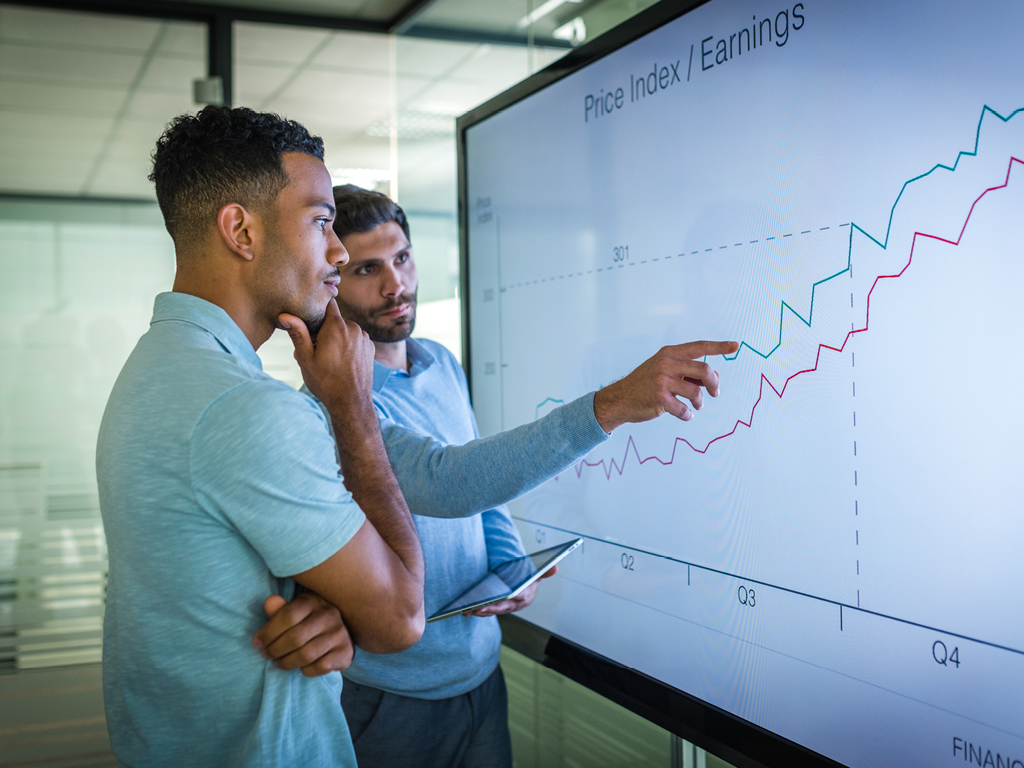Over the course of only 3 years, the COVID-19 pandemic has sent the world tumbling toward recession, supply shortages, labor scarcity, hyperinflation, and recession again. As a result, it has radically impacted the way businesses hire, the way employees gather, and the way customers shop. Here are the 8 most unusual effects documented by researchers and journalists.
1. Long COVID Costs Employers More Than Diabetes
We discussed the debilitating effects of long COVID previously, but it's worth reviewing. Long COVID is the common name for a host of conditions that can appear after recovery from the initial COVID-19 infection. Sufferers can experience over 200 symptoms, including difficulty concentrating, chronic fatigue, and shortness of breath.
All of this costs employers via increased healthcare premiums, decreased productivity, missed workdays, and lost labor. According to Nomi Health, these losses add up to $600 more per employee than diabetes. Per Nomi's press release in Utah Business, employers spent $2,654.67 on long COVID per covered member in the first half of 2022.
2. Employees Don't Need to Quit to Cause a Labor Shortage
The Brookings Institute recently compiled and analyzed data from the U.S. Census Bureau, the CDC, and several other organizations to deepen our understanding of how long COVID might be impacting the current labor shortage. Their findings should make any business owner sit up and take notice:
- Long COVID accounts for at least 15% of the current labor shortage
- Workers have lost $170 to $230 billion in wages due to long COVID
- The equivalent of 1.6 to 4 million full-time workers are missing from the labor force due to long COVID
Some of these missing workers have gone on long-term disability leave. However, rather than dropping out of the labor force entirely, many are reducing their hours in order to accommodate their newly reduced stamina. Brookings reviewed several studies analyzing this phenomenon:
- United Kingdom's Trades Union Congress: 16% of people with long COVID reduced their hours
- The Lancet: 45% of people with long COVID reduced their hours
- Minneapolis Federal Reserve: “on average, [people with long COVID] reduced their hours by 10 hours a week”
Brookings then calculated that these reduced hours resulted in the equivalent of “1.8% of the entire U.S. civilian labor force.” In other words, long COVID doesn't have to completely debilitate people to cause a labor shortage; it just has to reduce their productivity by a few hours a week.
3. COVID-19 Affects Healthcare Organizations Differently
Unlike other industries, where the labor shortage is due to the effects of long COVID or the “Great Resignation,” healthcare's labor shortage may be (partially) attributed to the virus's death toll. According to the World Health Organization, somewhere between 80,000 and 180,000 healthcare workers died from COVID-19 between January 2020 and May 2021.
Healthcare costs are also rising. McKinsey & Co. recently extrapolated a probable scenario “in which endemic COVID-19, without a major change in trajectory, could add approximately $220 billion to our total health system costs by 2027.”
4. Companies were Victims of COVID Fraud
Some employees were forging sick notes during the height of the pandemic. A Brooklyn woman recently plead guilty to selling fake COVID test results during the height of the pandemic.
However, before enacting a more stringent sick-leave policy, know that the woman in question also sold negative results; this suggests that many employees may have been more worried about losing income from work than they were about their health. Thus, it is far more beneficial for your organization to create a culture where employees are not penalized for taking sick leave.
 Surprisingly, some aspects of COVID-19 have actually helped businesses. Continue reading for the silver linings. (Image Credit: Getty / Ridofranz)
Surprisingly, some aspects of COVID-19 have actually helped businesses. Continue reading for the silver linings. (Image Credit: Getty / Ridofranz)
5. Companies Can Hire Talent with Cost-Effective Salaries
Many employers are now eager to hire workers remotely. For instance, the CEO of a local bank told the Boston Globe that he is now considering hiring remote employees from down south, as Boston's high housing costs drive talent away. The CEO of the Boston Chamber of commerce agrees, stating “It's much easier today[...]to hire workers in lower-cost locations.” This drive towards national or international hiring may grant organizations some much-needed wiggle room in their payroll budget.
6. COVID May Increase Revenue in Travel & Hospitality
Remote work (plus the inflation of airline ticket prices) has radically altered business trips in a way that may be beneficial for both hospitality and travel. According to a November Reuters article, “Industry data show business travelers are taking longer trips than before COVID-19[...]U.S. carriers, for example, are adding more midweek flights as travelers take more trips that blend business with leisure, with many capitalizing on greater flexibility to work remotely.” These longer hybrid trips also help the hospitality industry. One expert predicted hotels would see “higher revenue per available room.”
7. Employers Now Have Access to Previously Untapped Talent
Remote employment also allows talent with certain disabilities to bring their skills back to the workforce. According to the aforementioned Brookings report:
[...]the share of disabled Americans participating in the labor force has also increased, by about 13%. While we do not know for sure why more disabled people are participating in the labor force, one likely explanation is the pandemic shift to remote work, which makes employment more accessible for many with disabilities.
This flexibility benefits both disabled Americans and companies hungry for labor.
8. Businesses are Improving Their Infrastructure & Amenities
COVID-19's airborne nature is now common knowledge. Thus, some businesses extended their COVID lull deliberately in order to improve the efficiency and comfort of their space—especially those aspects related to infection prevention and air quality. For instance, according to the Minneapolis Post, one diner “in downtown St. Paul hosted a fundraiser[...]to upgrade their HVAC system and remodel the inside of the diner car.”
However, your business doesn't necessarily need to hold a fundraiser. As we've discussed before, improving indoor air quality pays for itself. Plus, it often goes hand-in-hand with sustainability improvements that can boost your building's rents and reputation.
As an incentive to enact those changes, the American Rescue Plan made $350 billion available to state, local, and tribal governments to assist businesses and communities. Much of this money can be used to fund improvement in ventilation, filtration, and purification in support of the EPA's Clean Air in Buildings Challenge. This might be one of COVID-19's largest silver linings.
Customers and employees will return to your space only if they feel comfortable doing so. But you don't have to take our word for it. According to Joe Spalding, CEO of Boston's Boch Center, “[Air] is the #1 thing that the audiences say they want. And if you don't have it, you're not having a safe atmosphere.” Spalding partnered with ActivePure to install active air purification throughout the Boch Center's theater before their successful reopening in 2021.
To learn more about how indoor air improvements can assist your business, visit our resource page.



